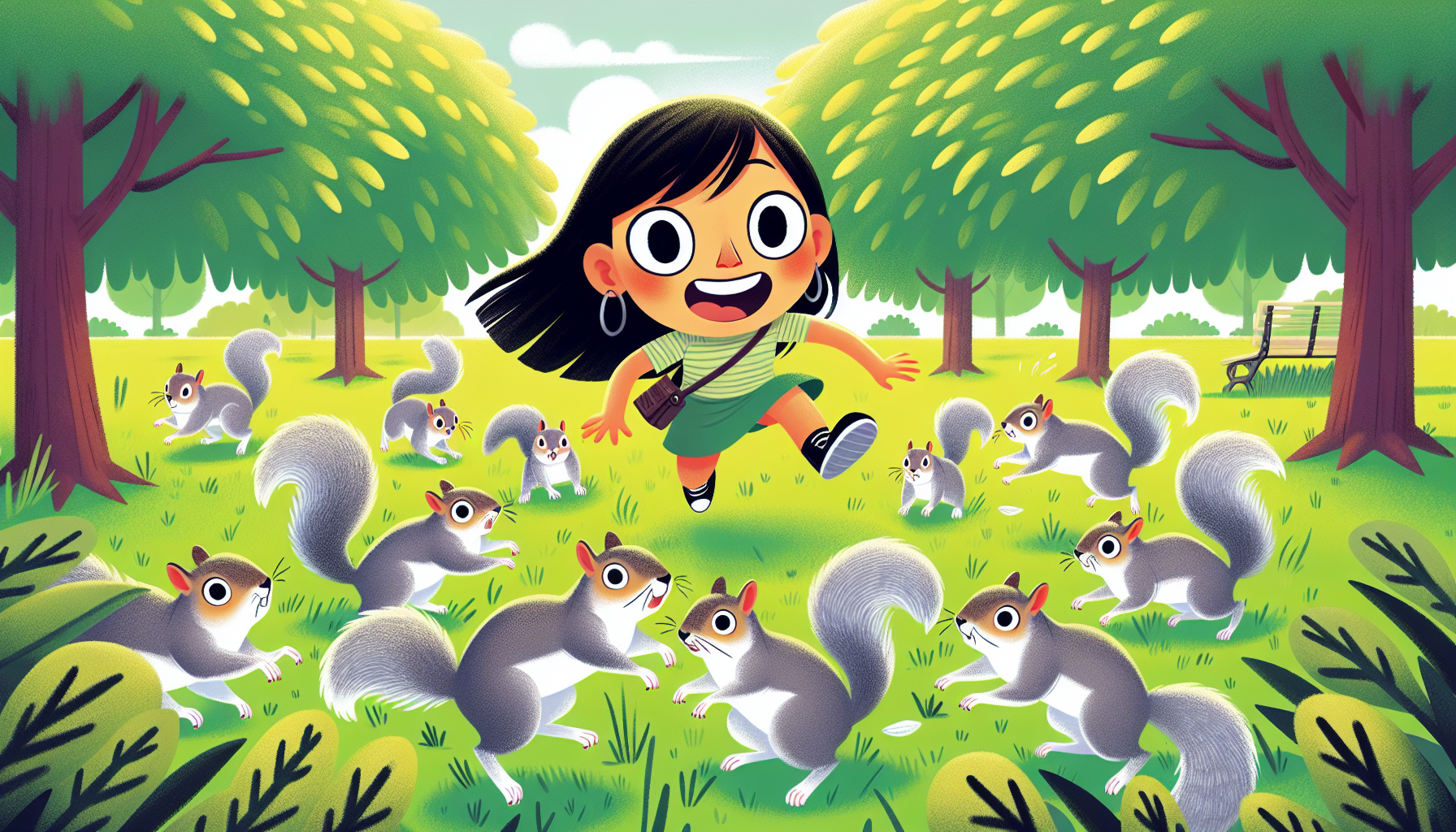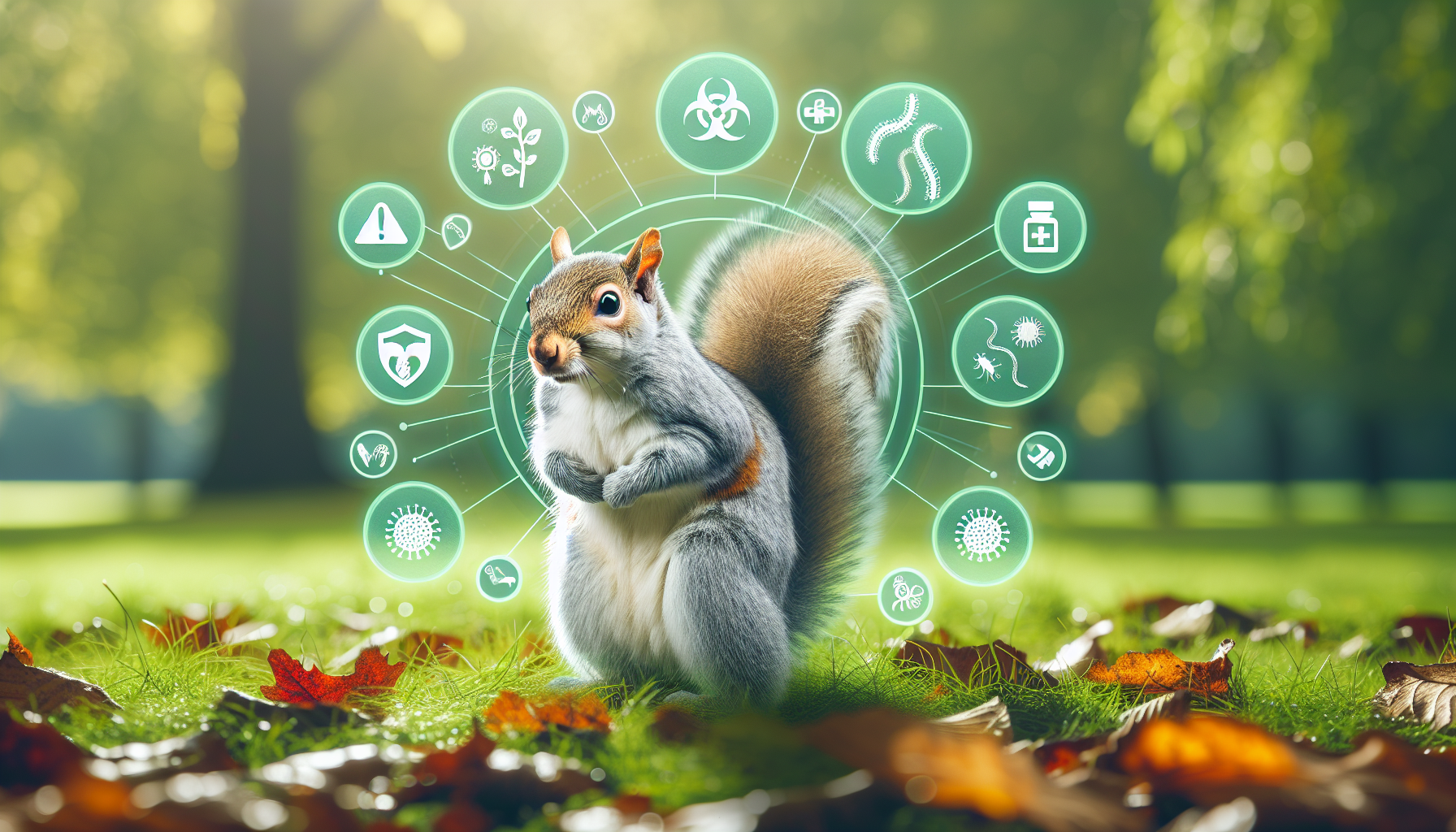Overview of Ontario’s Squirrel Population
Ontario is home to a diverse range of squirrel species, each with unique characteristics, behaviors, and habitats. These squirrels play a vital role in the ecosystem, contributing to seed dispersal and forest regeneration. In this article, we will explore the most common types of squirrels found in Ontario, providing a detailed overview of their appearance, habits, and the specific regions they inhabit.

Eastern Grey Squirrel (Sciurus carolinensis)
Appearance and Behaviour
The Eastern Grey Squirrel is one of the most widespread and commonly seen squirrels in Ontario. This species is typically recognized by its grey fur, though it can sometimes appear in a black or brown variation. Eastern Grey Squirrels are medium-sized, with a bushy tail that adds to their distinctive appearance.
These squirrels are known for their adaptability to urban environments. They thrive in cities, parks, and suburban areas, often seen scurrying across lawns, climbing trees, or foraging for food. Their diet primarily consists of nuts, seeds, fruits, and occasionally small insects or bird eggs.
Habitat and Range
Eastern Grey Squirrels are highly adaptable and can be found throughout Ontario. They are particularly abundant in southern Ontario, where they have successfully integrated into both natural and urban environments. These squirrels prefer deciduous forests but are equally comfortable in urban settings where food sources are readily available.
Reproduction and Nesting
Eastern Grey Squirrels breed twice a year, once in late winter and again in early summer. They build nests, known as dreys, in tree branches or sometimes in attics and chimneys of residential homes. These nests are made of twigs, leaves, and grass, providing a warm and secure environment for raising their young.
Red Squirrel (Tamiasciurus hudsonicus)
Appearance and Behaviour
Red Squirrels are smaller than their grey counterparts and are easily identified by their reddish-brown fur and white underbelly. They are highly energetic and vocal, often making chattering noises to communicate or ward off intruders.
Red Squirrels are known for their territorial behavior. They are less tolerant of other squirrels encroaching on their space and will fiercely defend their food caches. Their diet includes seeds, nuts, and conifer cones, and they are known to store large quantities of food for the winter months.
Habitat and Range
Red Squirrels prefer coniferous forests and are commonly found in northern and central Ontario. They are less likely to be found in urban areas compared to Eastern Grey Squirrels. Their preference for forested areas with dense tree cover makes them a vital part of the natural ecosystem, particularly in boreal forests.
Reproduction and Nesting
Red Squirrels also breed twice a year, with litters born in spring and late summer. They build their nests in tree cavities or construct spherical dreys in the branches. These nests are often lined with soft materials like moss and fur to keep the young warm.

Flying Squirrel (Glaucomys sabrinus and Glaucomys volans)
Appearance and Behaviour
Ontario is home to two species of Flying Squirrels: the Northern Flying Squirrel (Glaucomys sabrinus) and the Southern Flying Squirrel (Glaucomys volans). Both species are nocturnal and are rarely seen due to their nighttime activity.
Flying Squirrels have a unique patagium—a membrane that stretches from their wrists to their ankles—allowing them to glide between trees. This gliding ability is a key adaptation for escaping predators and traveling through their forested habitats.
Habitat and Range
Northern Flying Squirrels are more common in coniferous forests in northern Ontario, while Southern Flying Squirrels prefer deciduous forests and are found in southern Ontario. Both species are highly dependent on mature forests with abundant tree cover, where they can easily glide from tree to tree.
Reproduction and Nesting
Flying Squirrels breed once a year, with a single litter born in the late spring or early summer. They often nest in tree cavities, but will also use abandoned woodpecker holes or build dreys in dense foliage. Their nests are well-hidden and provide excellent protection for their young.
Chipmunk (Tamias striatus)
Appearance and Behaviour
Although not a true squirrel, the Eastern Chipmunk is often grouped with squirrels due to its similar appearance and behavior. Chipmunks are small, with distinctive stripes running down their backs. They are highly active and spend much of their time foraging on the ground.
Chipmunks are known for their cheek pouches, which they use to carry food back to their burrows. Their diet consists of seeds, nuts, fruits, and small insects. Unlike tree-dwelling squirrels, chipmunks live in burrows underground, where they store food and hibernate during the winter.
Habitat and Range
Eastern Chipmunks are common throughout Ontario, particularly in areas with dense undergrowth and plenty of ground cover. They are often found in forests, gardens, and parks, where they can easily find food and create burrows.
Reproduction and Nesting
Chipmunks breed twice a year, with litters born in spring and late summer. They create extensive burrow systems with multiple chambers for nesting, food storage, and waste. These burrows are often well-hidden and can be difficult to locate.
Ground Squirrel (Spermophilus tridecemlineatus)
Appearance and Behaviour
The Thirteen-lined Ground Squirrel is another ground-dwelling species found in Ontario. These squirrels are small and slender, with a pattern of 13 alternating brown and white stripes running down their backs.
Ground Squirrels are diurnal and spend much of their time foraging for food, including seeds, insects, and small vertebrates. They are known for their hibernation behavior, entering a deep sleep during the winter months in their underground burrows.
Habitat and Range
Thirteen-lined Ground Squirrels prefer open areas like grasslands, prairies, and agricultural fields. They are less common in heavily forested regions but can be found in parts of southern Ontario where suitable habitat exists.
Reproduction and Nesting
These squirrels breed once a year, with a litter born in early summer. Their burrows are complex, with multiple entrances and chambers for nesting and food storage. Ground Squirrels are solitary, with each individual maintaining its own burrow system.
Conservation and Interaction with Humans
Squirrels are an essential part of Ontario’s biodiversity, playing critical roles in seed dispersal and forest health. However, their adaptability to urban environments can sometimes lead to conflicts with humans, particularly when they nest in homes or damage property. Understanding their behaviors and habitats can help in managing these interactions humanely and effectively.
Conclusion
Ontario’s squirrels are diverse and fascinating creatures that contribute significantly to the province’s ecosystems. Whether you’re observing them in your backyard or encountering them in the wild, understanding the different types of squirrels can enhance your appreciation of these industrious and adaptable animals.












